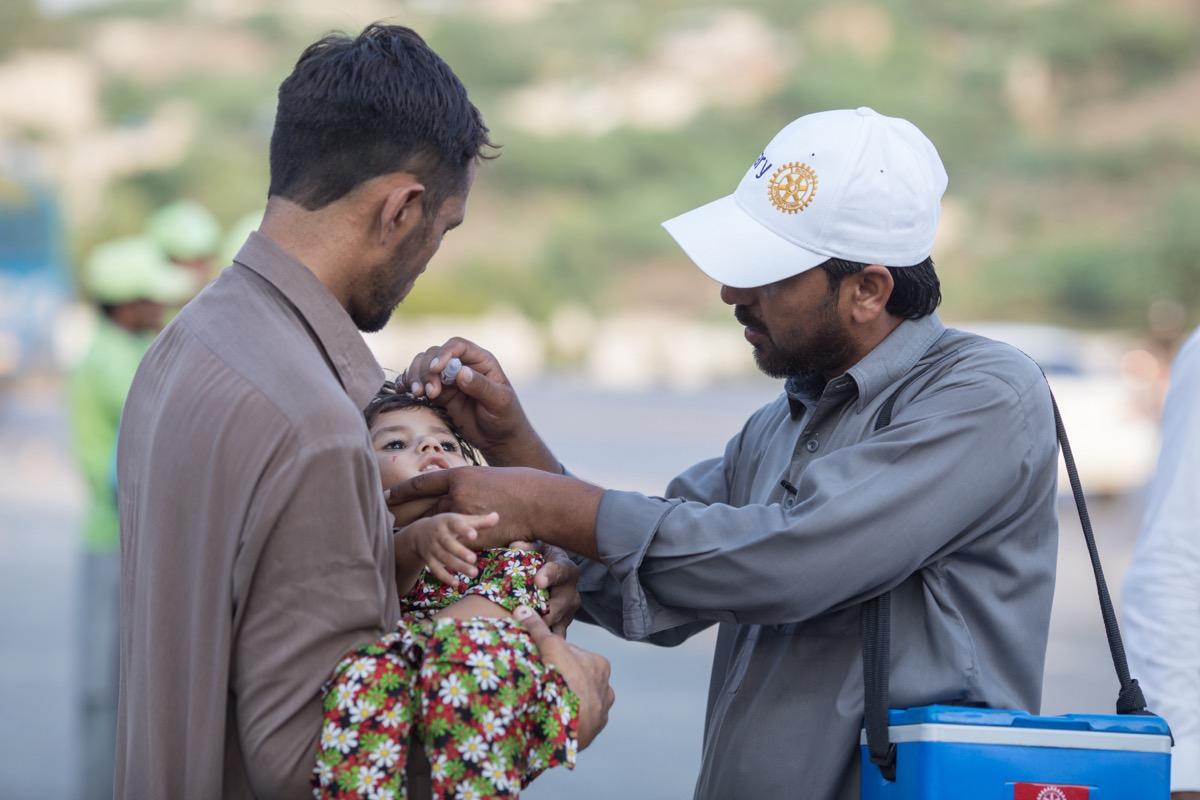Polio
Read about Rotary and Polio

Polio Eradication
A little history of polio
In the late 19th and early 20th centuries, frequent epidemics saw polio become the most feared disease in the world. A major outbreak in New York City in 1916 killed over 2000 people, and the worst recorded US outbreak in 1952 killed over 3000.
Many who survived the disease faced lifelong consequences. Deformed limbs meant they needed leg braces, crutches or wheelchairs, and some needed to use breathing devices like the iron lung, an artificial respirator invented for treatment of polio patients.
By the mid-20th century, the poliovirus could be found all over the world and killed or paralysed over half a million people every year. With no cure, and epidemics on the rise, there was an urgent need for a vaccine.
What is the latest position? Click this link to find the latest information.
The cure
In the early 1950s, the first successful vaccine was created by US physician Jonas Salk. Salk tested his experimental killed-virus vaccine on himself and his family in 1953, and a year later on 1.6 million children in Canada, Finland and the USA.
A second type of polio vaccine, the oral polio vaccine (OPV) was developed by physician and microbiologist Albert Sabin. It was used successfully from 1958.
In 1979 Rotary International started a multi-year project to immunise 6 million children in the Philippines.
In 1988, the World Health Assembly passed a resolution to eradicate polio – to achieve its permanent reduction to zero, with no risk of reintroduction – and in the same year, the Global Polio Eradication Initiative (GPEI) was launched. This is a public-private partnership led by national governments with six partners – the World Health Organization (WHO), Rotary International, the US Centres for Disease Control and Prevention (CDC), the United Nations Children’s Fund (UNICEF), Bill & Melinda Gates Foundation and Gavi, the vaccine alliance. Its goal is to eradicate polio worldwide.
Viruses and Vaccines
There are three types of the wild virus; types 1, 2 and 3. Types 2 & 3 have been eliminated worldwide but Type 1 is still circulating in Afghanistan and Pakistan. New types of virus have evolved related to the oral vaccine used. These are called vaccine derived viruses or cVDPV – this stands for circulating Vaccine Dependent Polio Virus. This type of polio arises from weak viruses which get into circulation from faeces of people vaccinated. cVDPV2 outbreaks are treated successfully by a new type of oral vaccine nOVDPV2.
Countries
Rotary’s pledge for a polio free world was made in 1985 when there were 125 polio endemic countries and hundreds of new cases every single day. In the past few years, only two countries, Pakistan and Afghanistan, have reported cases of polio caused by the wild poliovirus but no child anywhere is safe until every child has been fully vaccinated.
Vaccine derived virus has recently been detected in London (see the Times below) which illustrates that until every child is adequately vaccinated worldwide, we will never be entirely free from polio.
Costs
To finish the job over 2 billion doses of oral polio vaccine still have to be administered, to more than 400 million children in over 50 countries, each and every year and this will cost an estimated $1 billion a year. We have to have zero cases of polio and zero positive environmental samples before the world can finally be certified polio free.
Lomond Rotary
When a child receives their life-saving polio drops on mass polio immunisation days, their little finger is painted with a purple dye so it is clear they have received their polio vaccine.
We plant at least 4000 crocus corms each year in Autumn around the town and in Spring the purple flowers are a reminder of the work being conducted by dedicated teams to immunise children. We also raise funds for Polio Eradication which are matched by the Bill & Melinda Gates Foundation. Rotary’s target fundraising target for this year is $50 million which, if reached, will be matched.

